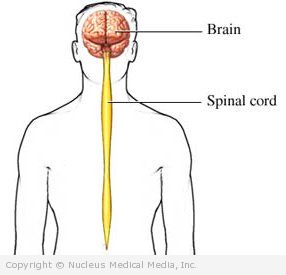(Air Sickness; Car Sickness; Sea Sickness)
Motion sickness – Definition
Motion sickness is characterized by symptoms, like nausea and vomiting, that are caused by motion or from feeling motion, like from watching a movie.
Motion sickness – Causes
Balance and equilibrium are maintained by an interaction among the inner ears, the eyes, pressure receptors on the skin, and motion receptors in the muscles and joints.
Motion sickness results when conflicting messages regarding spatial orientation and motion of the body are sent to the central nervous system. For example, reading a book while riding in a car may cause your eyes to send different messages than your inner ears regarding motion.
Motion sickness – Risk Factors
Anyone can get motion sickness. People who may have a greater risk include:
- Being a child
- Being a woman
- Having family members who get motion sickness
- Being in a long or rough car, boat, plane, or train ride
- Going on amusement park rides
- Having migraine headaches
Motion sickness – Symptoms
The most common symptoms include:
- Dizziness
- Upset stomach
- Nausea or vomiting
Other symptoms include:
- Tiredness or sleepiness
- Sweating
- Cold, clammy feeling
- Feeling faint
- Headache
- Loss of color, especially in the face
Motion sickness – Diagnosis
Your doctor will ask about your symptoms and medical history. A physical exam may be done.
Motion sickness – Treatment
Symptoms of motion sickness usually go away soon after the motion stops. But, for some people, the symptoms can last a day or more. The main treatment for motion sickness is rest.
To help control vomiting, medicines may be given rectally or intravenously (through a vein in the arm). If motion sickness lasts a long time, fluids may be given in order to prevent dehydration.
Motion sickness – Prevention
Strategies to prevent motion sickness include:
Medications
Medicines that prevent motion sickness should be taken as directed before you begin a trip or ride. These medicines can cause side effects, such as drowsiness, lack of alertness, or trouble concentrating.
Medications include:
- Over-the-counter antihistamines (eg, diphenhydramine, dimenhydrinate)
- Prescription scopolamine (available in many forms, including patches or pills)
- Other medicines (eg, prochlorperazine, promethazine, chlorpromazine)
Repeated Exposure
Repeated exposure to the motion that causes the sickness can decrease your symptoms. This treatment can take time, though, and be unpleasant.
Alternative Remedies
Commonly used alternative remedies include:
- Pressure patch worn on the wrist to put pressure on the pulse points
- Ginger
Motion sickness – Prevention
There are steps that you can take to be more prepared when taking a ride:
- Avoid the following before a trip or ride:
- Heavy meals or spicy foods
- Excess alcohol
- Lack of sleep
- During a trip or ride, avoid:
- Reading
- Looking at others who are experiencing motion sickness
- Talking about motion sickness
- Eating large or heavy meals
- During long trips, eat small, frequent meals or snacks consisting of easily digestible food or drink.
- During short trips, avoid eating or drinking.
- Drinking excess alcohol
- Looking at moving objects
- During a trip in a car:
- Sit in the front seat and look out the windshield.
- Drive if possible.
- Ask the driver to slow down or stop if you begin to feel sick.
- During a plane or train ride, look out a window.
- In a plane, sit over the wing for a less bumpy ride.
- During a boat ride:
- Sit towards the middle of the boat.
- Get plenty of fresh air.
- Do not stay below deck for long periods of time (especially on smaller boats).
- Avoid amusement park, virtual reality rides, and movies that may lead to motion sickness.

